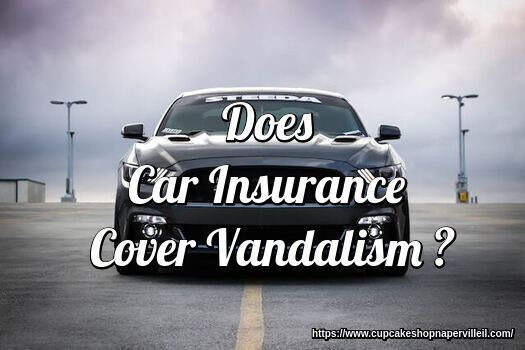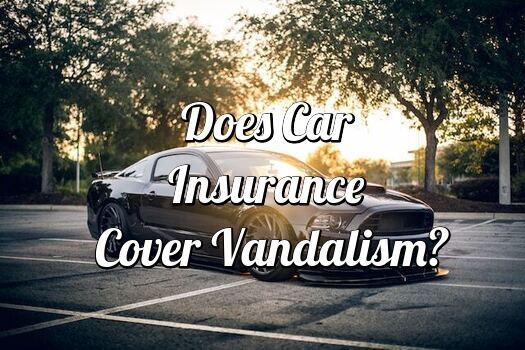Car Insurance Cover Vandalism:
Car insurance provides essential financial protection against various risks, including theft and damage caused by vandalism. Vandalism refers to intentional acts of damage, such as keying, graffiti, or broken windows, which can leave car owners facing substantial repair costs. In this article, we will delve into the topic of car insurance coverage for vandalism, exploring the types of coverage available, the claims process, and important considerations to keep in mind.
I. Understanding Comprehensive Coverage:
Comprehensive coverage is an optional component of car insurance that protects against non-collision incidents, including vandalism. While liability insurance covers damage caused by you to other people’s property, comprehensive coverage offers protection against damage to your own vehicle resulting from acts like vandalism, theft, fire, or natural disasters. It is important to note that comprehensive coverage is not legally required but is often recommended for added peace of mind.

II. Filing a Vandalism Claim:
If your car has been vandalized, there are several steps to take to file a vandalism claim:
- Document the Damage: Take photos or videos of the damage caused by the vandalism. This visual evidence will be useful when filing a claim with your insurance provider.
- File a Police Report: Contact the police and file a report documenting the vandalism. This report is essential when submitting your insurance claim and may be required by your insurance company.
- Contact Your Insurance Provider: Reach out to your insurance company’s claims department to report the vandalism. They will guide you through the claims process and provide instructions on the necessary documentation and information required.
- Provide Supporting Documentation: Along with the police report, you will likely need to provide additional documentation, such as the photos or videos you took of the damage, estimates for repairs, and any other relevant information requested by your insurance provider.
- Pay Your Deductible: If your claim is approved, you will typically be responsible for paying the deductible specified in your insurance policy. The deductible is the amount you must contribute before your insurance coverage applies.
III. Comprehensive Coverage Limitations and Exclusions:
While comprehensive coverage generally includes protection against vandalism, it is essential to understand its limitations and exclusions:
- Policy Terms and Conditions: Review your insurance policy to understand the specific terms and conditions related to comprehensive coverage. Pay attention to any limitations or exclusions that may apply to vandalism claims.
- Coverage Limits: Comprehensive coverage typically has a maximum limit for reimbursement. If the cost of repairs exceeds this limit, you may be responsible for the additional expenses.
- Deductibles: Most insurance policies require policyholders to pay a deductible before coverage kicks in. The deductible amount is predetermined and can vary depending on your policy. Be aware of the deductible amount and ensure it is affordable for you in case of vandalism.
- Optional Coverage Enhancements: Some insurance companies offer optional coverage enhancements that can be added to your policy. These enhancements may provide additional coverage for vandalism or waive the deductible specifically for vandalism-related claims. Check with your insurance provider to see if these options are available.
- Time Limits: Insurance policies often have time limits for reporting vandalism incidents. It is crucial to report the vandalism to your insurance provider promptly to ensure your claim is valid.
- Exclusions: Certain acts of vandalism may be excluded from coverage. For example, if the vandalism was committed by someone with whom you have a close relationship or if the act was intentional on your part, coverage may be denied. Review your policy carefully to understand any specific exclusions related to vandalism.
IV. Consequences for Premiums and Policy Renewal:
Filing a vandalism claim can have potential consequences for your car insurance premiums and policy renewal:
- Impact on Premiums: Filing a vandalism claim may result in an increase in your insurance premiums. Insurance companies consider the frequency and severity of claims when determining rates. However, some insurance providers offer forgiveness programs or accident forgiveness options, which may prevent premium increases due to vandalism claims.
- Policy Renewal: While a single vandalism claim may not lead to non-renewal of your policy, multiple claims or a history of vandalism incidents may make it more challenging to find affordable coverage. Insurance companies may consider you a higher risk and could choose not to renew your policy.
- No-Fault Vandalism Claims: Some insurance companies offer “no-fault” vandalism claims, where your rates are not affected if you file a vandalism claim without any evidence of negligence on your part. This coverage varies by insurance company, so it’s important to check with your provider about their specific policies.
V. Preventive Measures and Additional Considerations:

Taking preventive measures and considering additional factors can help protect your vehicle from vandalism and navigate the claims process more effectively:
- Secure Parking: Park your vehicle in well-lit areas or secure parking lots to minimize the risk of vandalism. Consider using a garage or installing a security system if possible.
- Anti-Theft Devices: Installing anti-theft devices, such as car alarms, steering wheel locks, or GPS tracking systems, can deter potential vandals and may also lower your insurance premiums.
- Neighborhood Watch: Engaging with your local neighborhood watch or community groups can create a sense of vigilance and discourage criminal activity.
- Vandalism Coverage Evaluation: Periodically review your insurance policy to ensure that your coverage adequately protects against vandalism. If you live in an area with a higher risk of vandalism, consider adjusting your coverage limits or adding optional enhancements.
- Communication with Insurance Provider: Keep an open line of communication with your insurance provider. Inform them about any changes in your vehicle’s storage location or additional preventive measures you have taken. They may offer recommendations or adjustments to your policy based on the information provided.
Conclusion:
Car insurance can provide crucial protection against vandalism, safeguarding your vehicle from intentional acts of damage. Comprehensive coverage typically covers vandalism incidents, but policyholders should be aware of any limitations, exclusions, deductibles, and coverage limits specified in their policy.
Taking preventive measures, promptly reporting vandalism incidents, and understanding the potential impact on insurance premiums and policy renewal can help car owners navigate the claims process effectively.
Remember to review your policy periodically, communicate with your insurance provider, and consider adding optional coverage enhancements if available. By being informed and proactive, you can ensure you have the necessary coverage to handle the financial implications of vandalism and protect your investment in your vehicle.